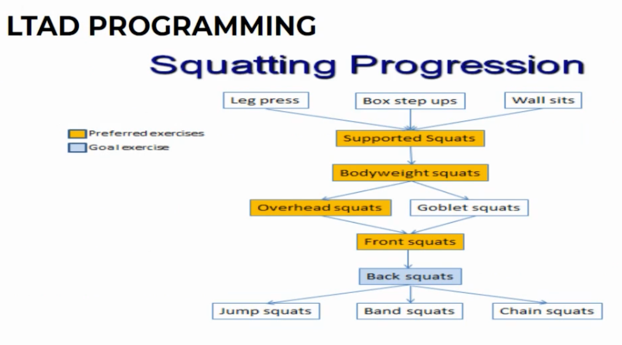The box squat is a progressive exercise on the path to resisted squats (back squat, front squat) (Science for Sport, 2020):

The athlete attempts to perform a squat onto a platform, makes light contact with the platform, and rises without applying any pressure to the platform. The movement relies on the ability of the athlete to achieve stable positions through the entire range of motion.
The athlete begins facing away from the platform at a distance that allows sitting down with thighs parallel to the ground and shins perpendicular to the ground. The toes should point slightly outward.





As the athlete extends his/her hips and knees, the athlete will move through a quarter squat position. The athlete will lower the arms in preparation for returning to the start position.


References
Science for Sport. (2020). Coach Academy – Long-term athletic development. Retrieved August 24, 2020, from https://app.scienceforsport.com/products/coach-academy/categories/3342198